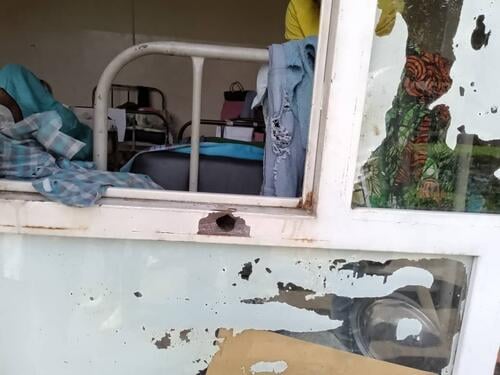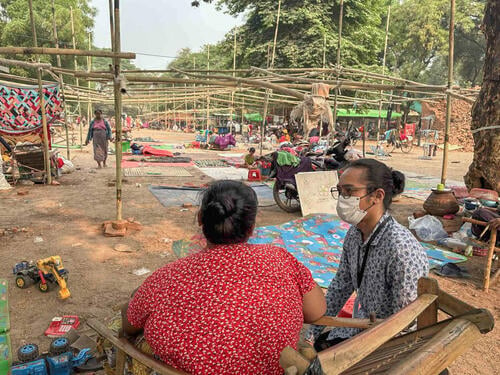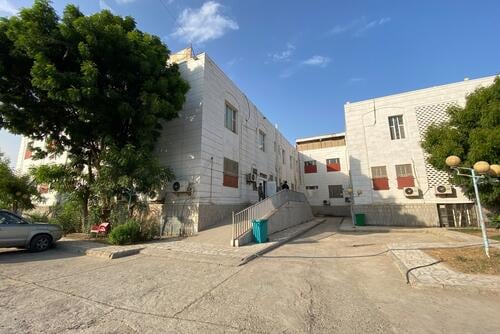From 6th April 1998, the surgical teams of the international medical aid agency Médecins Sans Frontières (MSF) at Connaught Hospital, Freetown, started recording an alarming increase in the number of patients suffering from severe mutilations. This report provides further details of the injuries inflicted on the people admitted to hospital, as well as a summary of in-depth interviews with over 70 survivors conducted by MSF medical staff. The victims, mostly civilians, originate from the north-eastern region of Kono, where insecurity is still rife.
The history of Sierra Leone and the recent outbreaks of fighting need little introduction. The first democratically elected president Ahmad Kabbah was ousted in a coup in May 1997 led by Johnny Paul Koromah, commander of the Sierra Leone military junta, with the support of the Revolutionary United Front (RUF). The RUF/AFRC remained in power until February 1998, when, after failed talks in Conakry, the West African troops of ECOMOG (Economic Community of West African States Cease-Fire Monitoring Group) forced the coup leaders and their followers out of Freetown and into the isolated areas upcountry.
While the capital Freetown, major towns and villages are now held by Ecomog and relatively safe for civilians, large areas in the countryside around these locations remain under the control of the former Junta. Fighting is currently under way in the north, west and east of the country.
Between 6th April and 4th May 1998, the Connaught Hospital in Freetown received 115 patients, most of whom are severely mutilated. Connaught Hospital, which receives MSF support, is Sierra Leone's only hospital with an orthopaedic surgeon.
Atrocities and mutilations
Mutilations and other forms of torture and retribution are not a new phenomenon in Sierra Leone. Between 1992 and 1996, many civilians (including non-nationals) were mutilated and murdered during attacks against villages and towns conducted by various armed groups. Expatriates were also taken hostage or killed. The horrific injuries now being treated at Connaught hospital are of a similar nature. As of 6th April, 1998 Connaught Hospital started receiving small or large groups, depending on the availability of transport.
The following overview gives the number of patients admitted with arm amputations.
Out of these 115 patients, 70 were interviewed (56 male, 14 female). Their mutilations and wounds are as follows : 4 men with both arms amputated, age ranging between 16 and 40.
- 14 men with one arm amputated, age ranging between 23 and 50.
- 5 men had, in addition to having their arm(s) amputated, a part of, or one or both ears cut off.
- 1 woman with one arm amputated as a result of a gunshot wound.
- 1 patient with an amputated foot, 1 patient with an amputated leg, both as the result of gunshot wounds.
- 23 patients with deep lacerations on lower arms, severed tendons, broken ulna and radius, as result of cutlass attacks.
- 7 patients with either a complete hand or several fingers missing as result of cutlass attacks.
- 20 patients with gunshot wounds.
- 1 patient with shrapnel wounds as result of Ecomog bombing.
- 2 women who were raped and had foreign objects inserted in their vagina.
Only one interviewee could be identified as a combatant (in this case a Kamajor fighter). All others were civilians, with occupations ranging from housewives, trader, farmer to diamond digger and miner. * While writing the report, this afternoon 4 May 1998, 13 more patients were admitted in Connaught Hospital. Of these 13 people, three men had both their arms hacked off, six had one arm or nearly one arm hacked of. One of the victims is a 60-year-old woman with one arm hacked off. The interviews were carried out by MSF staff over a period of four days. All patients were informed that all information would be dealt with in a confidential manner, and that no names would be recorded. None of the patients approached refused to be interviewed. The full story of when, where and how the attack occurred was recorded. The summary is as follows.
Attacks as told by victims
After having talked to the 70 patients, it became clear that between 15 and 25 April the villages between Njaiama Sewafe and Koidu, East Sierra Leone were attacked by groups of armed men. Some villages seem to have been attacked more then once. Patients told about attacks on their villages both during the day and at night, and also about attacks that occurred on the road, while people were moving between villages or their farms. More recently, on 2nd May, patients started to arrive from the area around Yifin and Alikalia, north-east of Koidu. All patients reported that after the attacks, people scattered into the bush in all directions. In most cases the current whereabouts of these people is unknown. It is also reported that, while moving away from their attacked villages, patients witnessed many "damaged" (wounded) and dead people on the roads. It might well be possible that the 115 patients admitted to the hospital form only a small percentage of the total wounded and mutilated people from these areas.
In general, most patients told about attacks that started with groups of men arriving in their villages, calling out that they were ECOMOG, and that they were there to free the villagers. Many villagers mentioned that they were be woken up by a knock on their door, with the order to open the door, that they were ECOMOG and that they were safe. Upon leaving their houses, the villagers then realised that these men did not belong to ECOMOG. Some of the attackers were wearing green fatigues. Villagers were then rounded up, in groups or in lines. They were then, one by one, in front of the other villagers, taken to the pounding block, asked by their attackers which arm they used to work with, after which the right or left arm would be put on the pounding block and amputated with a cutlass. Sometimes a pre-cut would be made with bayonet, to show where the amputation was to happen. People realising what was happening like one teacher, said that he used his left arm, even though he was right handed. His left arm was amputated. Several patient reported that the attackers took the amputated arms with them. One patient said that they did not take his arm, but that he was able to keep his cut-off arm. In some villages, after the people were rounded up, they were stripped naked and ordered to "use their women"; men were ordered to "use" their sister. When men refused to do so, their arms were amputated, and the women were raped by the attackers. After the attack, many patients mentioned that the armed men would tell them to go now, and report themselves to ECOMOG and tell ECOMOG, "That we, the attackers do not want them here, and to tell ECOMOG that the attackers were here, and that they would come to ECOMOG soon".
Patients were also told that they should go to President Kabbah, and ask him for a new arm. One patient was given a letter by the attackers, with the order to give it to President Kabbah. Some patients, who did not leave their village after the attack, and when encountering the attackers again, were ordered to leave ; "Why are you still here , we told you to go to ECOMOG !". Other men, who had one or two ears cut off, reported that the attackers told them, that without their ears, they should no longer listen to ECOMOG and the government and that they should listen better to the attackers. Other patients reported that they hid under their beds but that the attackers pulled them out from underneath the bed, or shot under the beds in the room, as they were aware that people were hiding there.
One patient reported that she was in a room with a group of other people, and that the attackers shot and killed four people, and the patient hid underneath the 4 dead bodies with her baby until the attackers had left. Several patients reported that groups of people had been rounded up, locked into a house and then the house was set on fire. It was reported that this had happened to women and children. In one family that was interviewed, the older brother had both arms amputated, his wife had one arm amputated, the younger nephew of 16 had both arms amputated, and another relative had both arms badly cut (tendons cut and ulna and radius broken due to cutlass attack).
One man of 50 had walked for 4 weeks, from village to village, with both arms amputated, until he reached a place where he found a commercial vehicle that took him and 2 others to Freetown. These examples are just a few of the stories as recorded by the MSF staff. Each patient had a similar gruesome story to tell.
Conclusion
After interviewed 70 patients at Connaught hospital and taking into account credible reports from other parts of the country, MSF strongly believes that the actual number of casualties may be much higher than the number of patients reaching the hospital. All patients interviewed mentioned other people, wounded and mutilated who ran into the bush during the attacks, and who remain unaccounted for. MSF is concerned that a significant proportion of the civilian population of rural Sierra Leone is vulnerable to more attacks of this sort and that no protection is currently available for them. MSF calls upon the international community to look urgently for ways to provide protection and assistance for these civilians.





